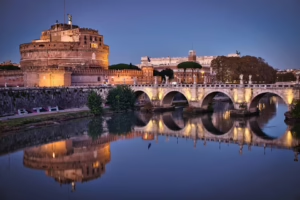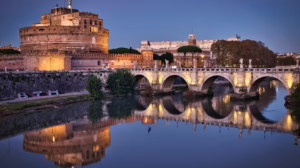Mapping Time: A Journey Through History via World Maps
The human fascination with maps spans centuries, bridging cultures, civilizations, and histories. Maps serve not just as navigational tools, but as windows into the worldviews of their creators, encapsulating cultural, political, and technological paradigms of their respective eras. “Mapping Time: A Journey Through History via World Maps” explores the evolution of cartographic representation, delving into the intricate relationship between humanity and the way we depict our world.
The Origins of Mapping
The earliest maps date back to ancient civilizations, such as the Babylonians who created clay tablets with rudimentary drawings of their territories. These representations were likely used for administrative and territorial purposes, reflecting a need to understand and control the land. The Mappa Mundi from the medieval period exemplified a significant transformation in mapping, where geographical accuracy took a backseat to theological and symbolic significance. These maps often placed Jerusalem at the center and represented the world through a lens shaped by faith and mythology.
Modern Footnote: [1] According to historian David Green, “Early maps served not just to navigate, but to narrate; they were stories waiting to be told.”
The Age of Exploration
The Age of Exploration in the 15th and 16th centuries marked a pivotal turning point in the realm of mapping. Explorers such as Columbus and Magellan returned from their voyages bearing knowledge of new continents and maritime routes. This period saw the advent of more accurate navigational techniques, thanks in part to advancements in astronomy and the invention of the compass.
As European powers competed for dominion over newly discovered lands, maps became instruments of both exploration and colonization. The Tabula Rogeriana created by the Muslim geographer al-Idrisi in 1154 showcased a comprehensive view of the known world, blending geographic knowledge from Europe, Asia, and Africa in a way that influenced cartography for centuries.
Modern Footnote: [2] In The Discovery of New Worlds: Mapping as a Form of Experience, author Derek Hayes discusses how “maps of this era were not simply tools of navigation but also statements of power.”
Printing Revolution
The invention of the printing press in the 15th century revolutionized the dissemination of maps. Maps that had previously been laboriously hand-drawn became widely accessible. The cartographer Martin Waldseemüller produced a stunning world map in 1507 that was the first to use the name “America,” a tribute to explorer Amerigo Vespucci. This map was not merely a geographical representation but a cultural phenomenon, influencing perceptions of the so-called “New World” and laying the foundation for future exploration.
Modern Footnote: [3] Historian Susan Schulten notes that “the impact of printed maps on public imagination was profound, shaping ideas of geography and nationality.”
Colonial Narratives
As European empires expanded, maps began to reflect and reinforce colonial ideologies. The maps of the British Empire, for example, often depicted vast territories in exaggerated detail, creating a sense of supremacy and control. Colonial maps were often laden with symbols of power—like the crown or eagle—disregarding or misrepresenting the existence of indigenous peoples and their territories.
The historical concept of terra nullius, which designated land as “empty” and therefore available for colonization, was often justified through map-making. These maps erased indigenous populations, allowing colonial powers to lay claim to them without acknowledgment.
Modern Footnote: [4] Cartographer J.B. Harley articulated how “maps serve as tools of power and can act as instruments of colonial domination.”
The Scientific Revolution and Modern Cartography
The 17th and 18th centuries ushered in the Scientific Revolution, leading to new approaches in mapping. The increase in scientific inquiry and exploration required more accurate and detailed representations of the Earth. Notable figures, including Isaac Newton and Gerardus Mercator, contributed to the development of projection methods that allowed for more precise navigation across the seas.
Mercator’s cylindrical map projection, developed in 1569, revolutionized the way sailors navigated the globe. However, this technique also distorted land masses, leading to misconceptions about the relative sizes of continents. Nevertheless, Mercator’s projection remains widely used and emphasizes the maritime dominance of Europe during that period.
Modern Footnote: [5] Edward Tufte discussed in The Visual Display of Quantitative Information how “the choices involved in the projection of maps impact their utility and perception.”
The Age of Nationalism
The emergence of nationalism in the 19th century transformed maps into symbols of national identity. Countries began to produce maps that emphasized boundaries, geographic features, and narratives that fostered a sense of unity and pride among their citizens. This transformation also incorporated visual elements such as flags and emblems that represented national states.
The idea of borders solidifying with the rise of nation-states often sparked conflicts rooted in territorial disputes. Maps played a critical role in these conflicts, with competing nations using them to assert their claims.
Modern Footnote: [6] In Maps and the American Experience, author John B. Harley argues that “the relationship between maps and national identity is complex, underscoring the power of geography in shaping cultural narratives.”
20th Century and Beyond: The Rise of Thematic Maps
The 20th century marked the rise of thematic maps, which focused on specific themes rather than mere geographical representation. These maps analyzed statistical data, demographics, climate patterns, and more, offering insights into complex global issues. Thematic maps became instrumental in understanding phenomena such as population distribution, natural resource allocation, and environmental change.
In particular, the advent of Geographic Information Systems (GIS) has revolutionized data visualization and spatial analysis. This technology allows for the layering of various data sets—socioeconomic, environmental, and health—which speaks to the interdisciplinary excitement of modern mapping.
Modern Footnote: [7] GIS expert Michael Goodchild describes how “the tools of modern mapping have expanded our capacity to visualize and interact with the world in unprecedented ways.”
The Role of Emerging Technologies
In the current digital age, tools such as Google Maps, satellite imagery, and real-time GPS tracking have transformed the landscape of cartography. These innovations have made maps more immediate, interactive, and user-friendly. The ease of access to vast geographical information has empowered individuals, communities, and organizations to engage more effectively with spatial data.
There is, however, a tension between accessibility and accuracy. The complexity of real-time data collection raises questions about privacy, surveillance, and the commodification of geographic information. A new challenge emerges: how do we balance the benefits of accessibility with ethical considerations?
Modern Footnote: [8] In Mapping the Future: The Role of Technology in Cartography, author Tim Robinson argues, “Emerging technologies bring both promise and peril; the question remains how we navigate these new landscapes responsibly.”
Conclusion: The Future of Maps
Maps are more than mere representations of geography; they are reflections of humanity’s evolving relationship with the world. The cartographic journey from ancient clay tablets to interactive digital maps illustrates not only the advancements in technology but also shifts in cultural, political, and social narratives. As we continue into the 21st century, the role of mapping will undoubtedly evolve, influenced by new challenges such as climate change, migration, and geopolitics.
In this ever-changing landscape, maps will remain integral to our attempts to understand and navigate our world. As we endeavor to map the future, we must also grapple with the legacies of the past, recognizing that behind each map lies a story, a set of choices, and a vision that can shape our understanding of time and space.
Modern Footnote: [9] Historian David Harvey encapsulates the essence of our cartographic journey, stating, “To map the world is to understand its layers; to understand its layers is to address the issues of our time.”
This article provides an overview of the historical evolution of maps, highlighting significant milestones and cultural implications throughout various periods. For a detailed exploration, you may consider diving into specific eras or thematic studies related to the impact of maps within societal frameworks.


























Add Comment